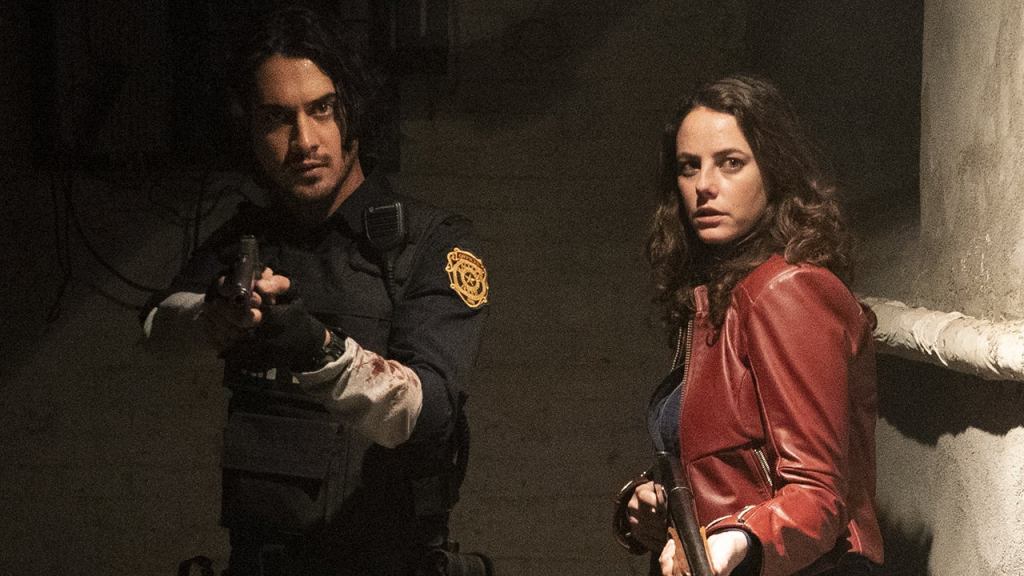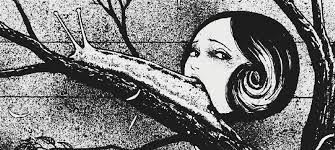Resident Evil: Welcome to Raccoon City
Director: Johannes Roberts
Studio: Constantin Films/ Screen Gems/Davis Raccoon Films
Welcome my friends.
Today I am going to do something a bit different, Three days ago, after so much wait, I was able to finally view this «reboot» of the Resident Evil film series (live-action, of course), trust me, I am everything but a fan of the movies created by Paul W. S. Anderson; each one being worse than the last one. Despite that, I have almost no expectations from this new movie.
Having said that, let me introduce you…

I know that some of you might not like to see me writing about films, especially after watching a movie this bad, because trust me, Resident Evil: Welcome to Raccoon City is really bad. Not worth it. But I am a big fan of Resident Evil, I even finished Resident Evil 4 years ago… Like four times, and I played Resident Evil 2 when I was in high-school, but I didn’t get that far on the game, and I knew I had to watch WTRC.
I repeat… not that I got high expectations, especially after I watched the trailer and set photos.
So, this is what I will do. First, I will talk about the premise of the movie, then a non-spoiler review, and then I will reveal spoilers, and I think I have a lot to say, but I will do my best to keep it as brief as possible, because I want to finish quickly with this itchy, tasty calvary.
And before I start, I must ask you the typical questions.
Are you my friends ok? Feeling healthy?
If the answer is yes, then I am happy.
Now, I will start and hopefully I will not become a Jill Sandwich (Enough bad references)
PREMISE

Resident Evil: Welcome to Raccoon City takes place in 1998.
After so many years, Claire Redfield returns to her hometown, Raccoon City, Oklahoma (Just kidding, I made that up), to meet again with her older brother, Chris, who is now a member of the S.T.A.R.S., inside Raccoon Police Department, to convince him about the evil schemes of Umbrella Corporation, which is plotting to destroy the city, and recruit him to stop this company together. However, Chris is called to investigate an incident on Spencer Mansion, located in Arklay Mountains, along with his Alpha Team, composed by Richard Aiken, Albert Wesker and Jill Valentine.
But then… a zombie outbreak occurs, now Claire and Chris must survive it and reunite again, along with rookie police member, Leon S. Kennedy.

And yes. You read that correctly. Resident Evil: WTRC, for some reason, combines the plots and story of Resident Evil and Resident Evil 2. Why? I have no freaking idea. But rest assured that is the tip of the iceberg, there is so much nonsense and so much gibberish from this grotesque.
It is my duty to inform that, while Paul W. S. Anderson serves only as an executive producer in RE: WTRC, the writer and director is Johannes Roberts, known for horror movies that have received not-so-positive reviews, included, but not limited to…



And I checked the score of these movies on IMDB.
THE OTHER SIDE OF THE DOOR – 5.3/10
47 METERS DOWN: UNCAGED – 5.0/10
47 METERS DOWN – 5.7/10
As you can see, these movies have really mediocre, or standard at best. Personally, I couldn’t care less about them, especially after watching RE: WTRC. Also, the budget of this movie was of $25 million, making it the live-action with the smallest budget, including Anderson’s franchise.
NON-SPOILER REVIEW

First things first, let’s get the good stuff. There is some decent fanservice for the good ol’ fans of the games of Resident Evil, so many references from Resident Evil 1, including the famous sentence called Itchy, Tasty, from the animal keeper, until our everlasting meme.

Along with many references toward the 90s technology, including pagers, Nokia phones, VHS, and so on.
Let’s go with the bad stuff.
For starters… I don’t know what the director was thinking by combining the stories of Resident Evil and Resident Evil 2 in a movie of just 107 minutes. Those fans of Resident Evil would know by now that both games, either originals or remakes, have wonderful, complex stories, with compelling characters, that unfold their mysteries as the games progress, and the characters grow. Because of that, the movie is forced to accelerate the pacing and the rhythm of the «story», filling itself with plot holes and… either discarding good part of the backstory, or cramp it in a clearly rushed fashion, making the characters flat and forgettable.
And that is not the only problem with the pacing. Everything in this movie passes so fast that you cannot relate with anything, not even with the elements we are clearly supposed to sympathise with, like the «subplot» that involves the strained relationship of Chris and Claire.
That’s right. In RE: WTRC, Chris and Claire haven’t talked in years.

In other words, there are so many elements all together in the short runtime of the movie that you can’t stop wondering what is going on, and when you get a clear idea of what happened, you get distracted by the change of scene, from the Spencer Mansion to Raccoon City, ruining any good feeling that you would probably tried to catch.
Secondly, because of the budget, the production design does not really look that good, it looks more like a B-movie rather than a blockbuster. And you will find this a lot when Alpha Team finally reaches Spencer Mansion, or on the Raccoon Police Department entrance. There are some good depictions, such as the Raccoon City Orphanage.

You know, from the RE2 Remake.

But… what’s the point of having these fantastic references from the games if the story is both flat and poorly adapted, because that is another problem. Johannes Roberts wrote the script, and he makes so many chances to the lore of Resident Evil and Resident Evil 2 that it becomes unrecognisable.
Yes. Even if there was way to condense the stories of the two games in 107 minutes, it was obvious that Johannes Roberts didn’t care. Because of the awful script, we have no choice that to believe that.
The casting is… How to put it lightly? A disaster!

Let me guide you. From left to right – Jill Valentine, Albert Wesker, Claire Redfield, Chris Redfield, and Leon S. Kennedy.
If it wasn;’t because these characters introduced themselves inside the movie, I will never recognise them. I am dead serious. None have any resemblance with their video games counterparts, except to Chris and Claire. Even if they look alike, the acting is awful. But I will talk about them later.
Ok. Now. I will start the…
SPOILER SECTION

The movie starts in 1980s, where Claire lives with her brother, Chris, in the orphanage, under the tutelage of Dr. William Birkin. Then, out of nowhere, Claire is called by another girl, which, to my surprise, is none other than Lisa Trevor. From the beginning, it is obvious that Umbrella uses the orphans to experiments.
Now, here are my questions:
Why is Lisa Trevor free? Shouldn’t be she locked? Why is she befriending Claire? Why none of the kids have made any ruckus? How is Lisa Trevor in the orphanage?
In the games, Lisa Trevor is the daughter of George Trevor, the architect of the Spencer Mansion, and later used for hideous experiments with the Progenitor Virus, become an unstable monster, a danger for Umbrella. In contrast, the movie puts Lisa and Claire for no apparent reason.
And there are more questions.
Why Claire didn’t take Chris after escaping? Were did she go afterwards? Why Birkin «adopted» Chris? And if that is the case… Why didn’t Birkin put Chris to work for Umbrella? Wouldn’t make more sense instead of working for the RPD?
Everything related to the strain between Chris and Claire was a filler. Why? Because you can take it out from the film, and it barely affects the plot. At the beginning, both argue, and then what happens? Absolutely nothing. They resolve everything with an apology, and that’s that.
Despite the movie claims that Birkin was like a father for Chris, in the movie they barely have contact with each other, only at the end of the movie.

And after injecting himself with the G-Virus, Birkin can speak articulated sentences to Chris., And I do not know if that happens in both the remake and the original, but I am convinced it does not. Because the G-Virus mutates you, for being a more aggressive variant of the T-Virus. Another dreadful change made by the director.
Raccoon City looks like anything but a city. I still do not know why it was turned into a small town. And yes, I can see it was due to budget, but a small town is not as intense and imposing in terms of setting like a big city, like Raccoon City should be.

This version of Jill of awful, and it is not just because of the race change, it is also because of the acting, which is, as I mentioned, horrendous, I have nothing against Hannah John-Kamen, she is a good actress, but here, her job was a complete miss.
The same goes to Albert Wesker.
But the worst has done to Leon.

As we, fans of Resident Evil, would know, Leon, in both the original and the remake, was naive, impulsive rookie member of police, but he was also brave, resilient and loyal to a fault. In fact, it was precisely his actions in Raccoon City that earn hime a place with the President of the United States in Resident Evil 4.

But no, In the movie, he is a numbnuts, with rich dad, who needs to be saved all the time.
Unbelievable!! Freaking unbelievable!! It is just impossible for this derailment of Leon to be done by accident, the director just wanted to destroy Leon. I think it is so obvious that, for me, doing the statement here is absolutely offensive. What is really shocking is what the director said about the casting.
«It was hugely important with the whole casting process to find people who embodied the spirit and energy of the characters I wanted to portray. I think often in game adaptations one of the big flaws can be just casting someone to look visually like the characters.»
And then I thought… This director must be thinking we are idiots. If we really wanted to adequately portrayed these characters, he will never… ever, changed both Leon or Jill like that. In fact, if I was that impulsive, I will be accusing the director of tokenism. You know, casting diversity just for the sake of pleasing a group who will never watch this movie.
Anyway, this is just a small example. I didn’t mention the action scenes and the scare fashion, which leaves a lot to be desired.
If you want RE: WTRC, not that you want to, you will find out more flaws.
CONCLUSION

Undoubtedly, Resident Evil: Welcome to Raccoon City is one of the worst video-game adaptations I have ever seen, and a dreadful way to reboot this franchise. It is a shame, because I love Sonic and Mortal Kombat Legends: Scorpion’s Revenge, they are not the most accurately movies based on videogames, but they are indeed solid and well-done, and both gave me hope that perhaps this kind of movies will improve, however, mankind has still a long way to go before doing adaptations these beautiful games deserve.
Welcome to Raccoon City? I rather go to Yharnam.

Yes. It is a terrible place to visit, but at least it is to be taken seriously, and has a beautiful sight.

Have a great week. And thank your for stepping by.







































































































